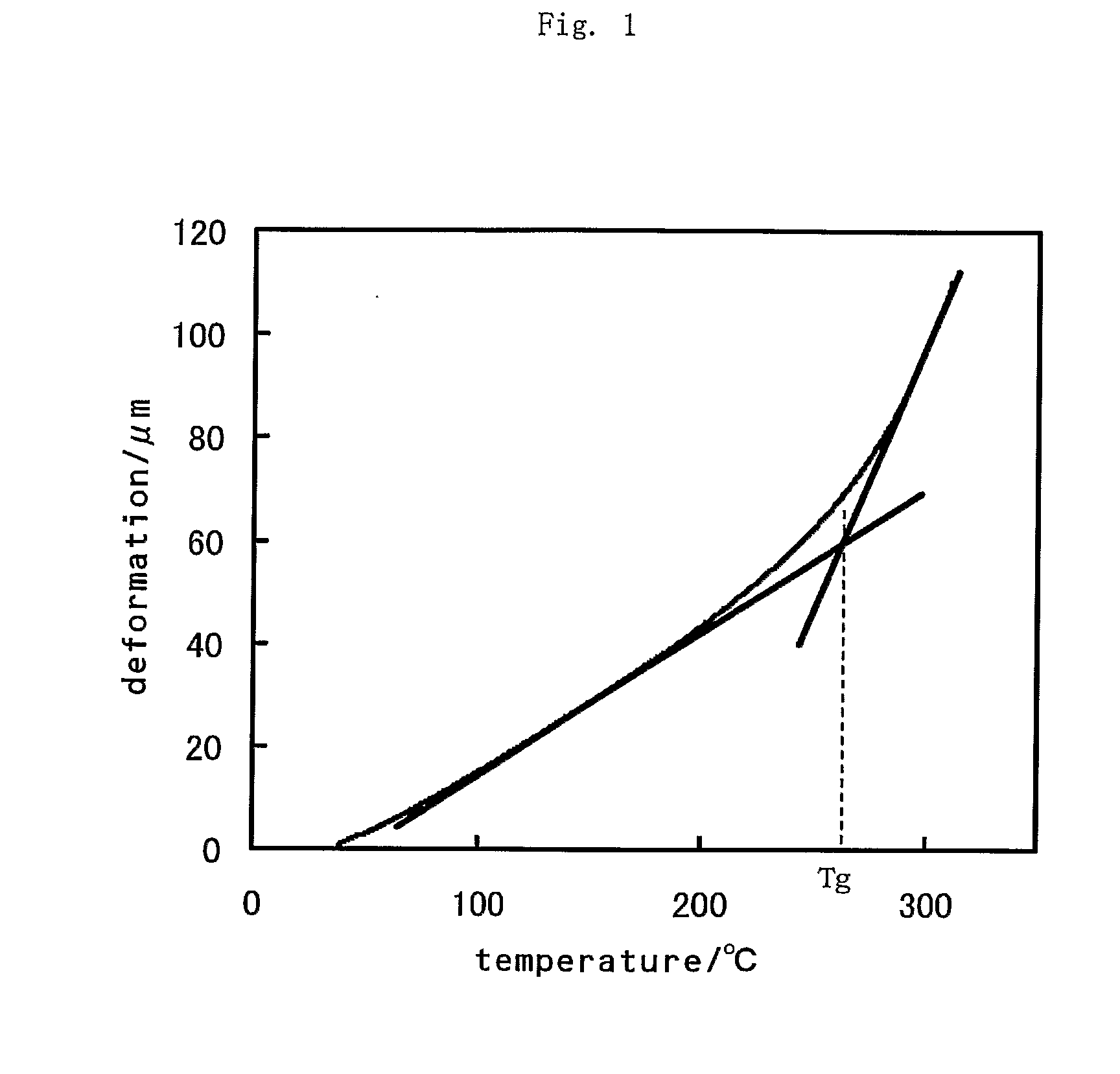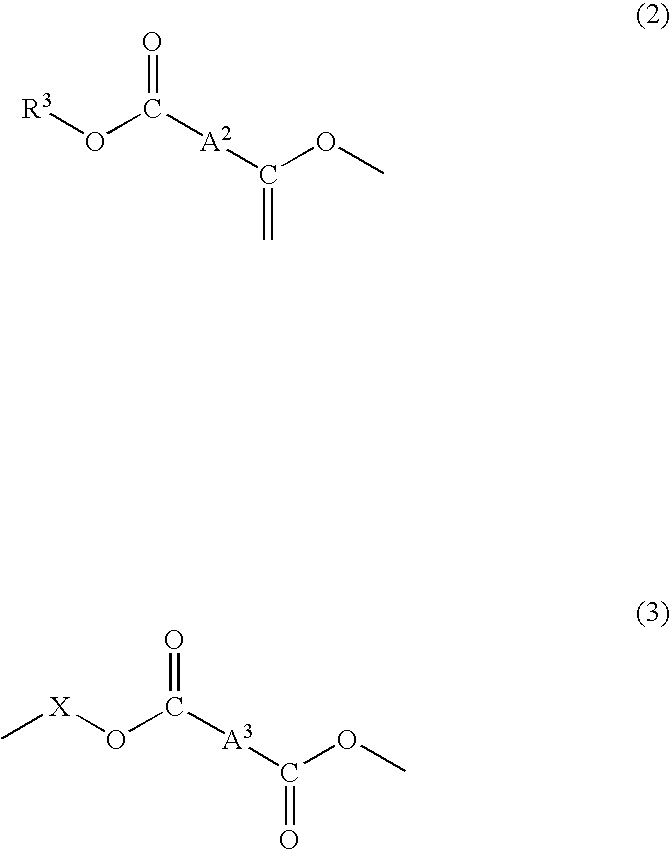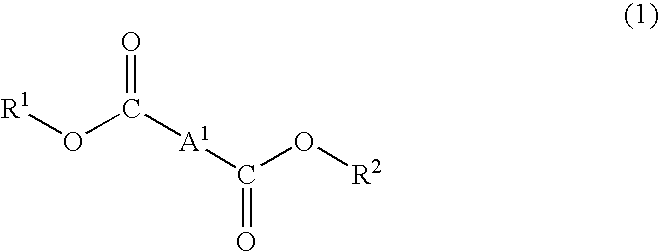Transparent conductive substrate
- Summary
- Abstract
- Description
- Claims
- Application Information
AI Technical Summary
Benefits of technology
Problems solved by technology
Method used
Image
Examples
synthesis example 1
[0092]In a 2 L-volume three-neck flask equipped with a distillation unit, 1625 g of diallyl terephthalate, 167 g of propylene glycol and 0.813 g of dibutyl tin oxide were placed. The mixture was heated under nitrogen stream while distilling off generated alcohol at 180° C. At the time point when the amount of the distilled alcohol reached about 170 g, the inside of the reaction system was depressurized gradually to 6.6 kPa over about 4 hours to accelerate the distillation rate of alcohol. At the time point when almost no distilled liquid coming out was observed, the inside of the reaction system was depressurized to 0.5 kPa and reaction was continued for another 1 hour. Then the reaction product was cooled down. Hereinafter, the thus obtained reaction product is called “oligomer (1)”. Although some diallyl terephthalate remains unreacted in oligomer (1), the obtained product including this is referred to as “oligomer (1)” for the sake of simplicity. This simplicity is applied to the...
synthesis example 2
[0093]In a 2 L-volume three-neck flask equipped with a distillation unit, 1400 g of diallyl 1,4-cyclohexanedicarboxylate, 165.4 g of trimethylolpropane and 1.40 g of dibutyltinoxide were placed. The mixture was heated under nitrogen stream while distilling off generated alcohol at 180° C. At the time point when the amount of the distilled alcohol became about 150 g, the inside of the reaction system was depressurized gradually to 6.6 kPa over about 4 hours to accelerate the distillation rate of alcohol. At the time point when almost no distilled liquid coming out was observed, the inside of the reaction system was depressurized to 0.5 kPa and reaction was continued for another 1 hour. Then the reaction product was cooled down. Hereinafter, the thus obtained reaction product is called “oligomer (2)”.
synthesis example 3
[0094]In a 2 L-volume three-neck flask equipped with a distillation unit, 1400 g of diallyl 1,4-cyclohexanedicarboxylate, 125.91 g of pentaerythritol and 1.40 g of dibutyl tin oxide were placed. The mixture was heated under nitrogen stream while distilling off generated alcohol at 180° C. At the time point when the amount of the distilled alcohol became about 150 g, the inside of the reaction system was depressurized gradually to 6.6 kPa over about 4 hours to accelerate the distillation rate of alcohol. At the time point when almost no distilled liquid coming out was observed, the inside of the reaction system was depressurized to 0.5 kPa and reaction was continued for another 1 hour. Then the reaction product was cooled down. Then, 700 g of the obtained reaction product was transferred into a disposable plastic cup and 300 g of triallyl isocyanurate was added thereto, followed by stirring with a stirrer until the mixture became uniform. Hereinafter, the thus obtained reaction produ...
PUM
| Property | Measurement | Unit |
|---|---|---|
| Temperature | aaaaa | aaaaa |
| Mass | aaaaa | aaaaa |
| Mass | aaaaa | aaaaa |
Abstract
Description
Claims
Application Information
 Login to View More
Login to View More - R&D
- Intellectual Property
- Life Sciences
- Materials
- Tech Scout
- Unparalleled Data Quality
- Higher Quality Content
- 60% Fewer Hallucinations
Browse by: Latest US Patents, China's latest patents, Technical Efficacy Thesaurus, Application Domain, Technology Topic, Popular Technical Reports.
© 2025 PatSnap. All rights reserved.Legal|Privacy policy|Modern Slavery Act Transparency Statement|Sitemap|About US| Contact US: help@patsnap.com



